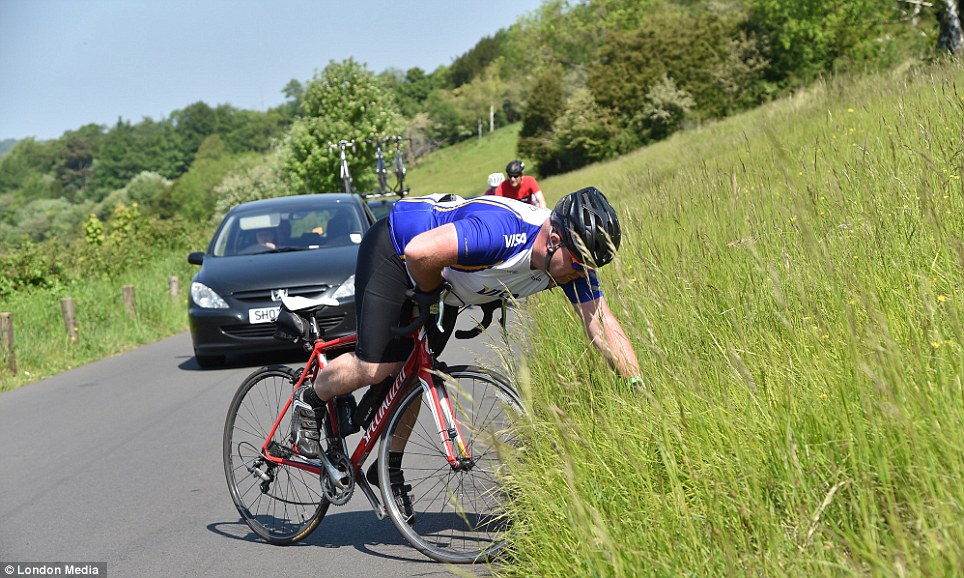It is essential these days to maintain strength and health. We are all living longer and what is the point of a long life if we are plagued by health issues.
We as physiotherapists here at Pain Slayers, also known as Graceville Physiotherapy, believe that it does not need to be difficult to maintain and improve your health.
We have decided that there are 7 ways that you can help to remain strong and healthy at any age or stage of your Life.

Angela Melit | Principal Physiotherapist at Graceville Physiotherapy
No. 1 - Get Moving
Any movement is better than no movement.
Even if you are unwell it is beneficial to have a walk around your house or yard than to sit and do nothing. If you are so unwell that you are in bed or a recliner move whatever you can while you are in that position.
Moving your feet backwards and forwards helps to promote blood flow through the legs and prevents blood clots. Lifting your arms up overhead helps to prevent shoulder and upper back stiffness. Squeezing your butt cheeks helps you to remain strong when standing.
Try not to get into the habit of letting your family do everything for you. Do as much as you can yourself.
No. 2 - Do not sit for more than 30 minutes at a time
Sitting is the new smoking!
Sitting may be required for certain tasks but it is essential that you get up every 30 mins if you need to do a lot of sitting.
2 minutes of walking around after 30 minutes of sitting can negate all of the issues that can arise from sitting too much. Sitting causes us to become weak in our bottom or gluteal muscles which are essential for standing and prevent lower back pain. When you are watching TV don’t skip through the ads if you are watching something recorded. When the ads are on get up and move around a bit, your body will love you for it.
Sitting also puts more pressure on lower back structures. Ever wondered why it is hard to straighten up when you have been sitting? Your muscles and tissues have a memory and if you sit a lot it is more difficult to straighten up your back and hips after sitting. This should be reason in itself to avoid the sitting posture for too long.
Number 3 - Maintain a strong pelvic floor
Pelvic Floor muscles are one of the most important group of muscles in the body.
Maintaining a strong Pelvic Floor may not be as difficult as you might think but you first need to understand why it is necessary.
Everybody knows that if our Pelvic Floor is weak we may experience some bowel or bladder incontinence. Our Pelvic Floor is like a hammock of muscles that hold all of our internal organs inside our abdominal cavity. When we contract or lift up through the pelvic floor we lift the abdominal organs up and this can help to prevent prolapse of some of these organs. Our pelvic floor muscles also support our lower back. Activation of the pelvic floor tilts the coccyx/tail bone and therefore sets up the lower spine in an optimal position for stability.
How to correctly engage your pelvic floor muscles
Strengthening your Pelvic Floor can be done during the day during your normal activities. Every time you lift, reach for something, push something or pull something think about breathing out and lifting up through the pelvic floor as if you are trying to stop yourself from urinating. This will get your pelvic floor working the way it should during your everyday activities. The heavier the item you need to lift the more you need to lift up through the pelvic floor. If you know that you have a weak pelvic floor it is essential that you do not lift anything more than 5 kgs as it can result in lower back pain.
Tips to protect your pelvic floor muscles
1
Sometimes we can mistakenly think that bracing our abdominals helps with our core strength but it is often this that causes our pelvic floor to become weak. Bracing the abdominals can result in holding the breath, increasing the intra-abdominal pressure and this then causes a big downward pressure onto the pelvic floor group of muscles stretching it and resulting in weakness.2
Excessive coughing and sneezing cause pressure on the pelvic floor and can often lead to weakness and incontinence. A handy tip is to move your ribs to your hips while coughing and sneezing. This will lessen the downward pressure on the pelvic floor.3
Straining on the toilet is one of the main reasons why women can do damage to their pelvic floor. Try to lean forward and have your knees a little higher than your hips when using the toilet. A small foot stool is all that is needed to ensure correct positioning. You can also use a pack of unopened toilet paper to put your feet up on. Drinking plenty of water and fibre rich foods also will help. Avoiding medications with codeine in them is also a good idea as these medications cause constipation and often result in poor pelvic floor function.
No. 4 - Maintain strong bones with load-bearing exercise
It is necessary to load the bones and joints for them to keep strong. Any weight bearing exercise will keep those bones strong and help prevent osteoporosis. It is not always necessary to hold hand weights to do this.
Modified push ups on a bench is great for loading up the upper back, shoulders and arm bones,
Walking is great for loading up the hip joints, lower back and leg bones. Actually walking is one of the best forms of exercise around. It is particularly good for people with lower back pain as long as the pain does not worsen during the walk.
Load bearing exercise also helps to keep the pelvic floor strong as long as there is no straining involved. It is well known in the physiotherapy field that people doing a lot of weights, high impact exercise and dancers can all have poor pelvic floor function.
No. 5 - Maintain good balance and posture
Balance exercises are essential to prevent falls and keep you mobile. In fact they also help to keep your pelvic floor strong. If your balance is off your pelvic floor is usually weak also.
Good balance requires good activation of your core muscles and the ability to hold a good posture. Good balance also ensures that you look good. You hold your posture upright and tall and keep your tummy in when your balance and posture is good.
This can also help to make you look younger and who wouldn't like this!
Balance exercises are easy to do while you are in the kitchen cooking dinner, making a cup of tea, when you get up out of bed etc.
Number 6 - Exercise with a friend
Exercising with a friend usually means that you become more accountable and are less likely to stop exercising.
We are usually more likely to let ourselves down than let a friend or group of friends down.
Setting aside certain times during the week when you meet up with a friend to go for a walk or having a group class that you attend every week is a great way of ensuring that you keep up the exercise.
It is also very important socially and mentally that you maintain contact with other women.
How else are you going to unload some of the pressures that you might be feeling without being judged?! Everyone needs to complain about their partner or family occasionally and women friends are the best to vent to. They usually have a similar story so we learn that everyone has similar issues. This combined with physical exercise is essential for overall health and well being.
No. 7 - Do these simple exercise 3 times everyday
1
Sit to stand out of your chair 10 times trying not to use your arms. As you stand up squeeze your butt cheeks together and stand very tall.2
Stand with your legs pressed together and while keeping your heels together raise up and down on your toes. Do this 10 times keeping your heels together and thinking about lifting through the pelvic floor muscles as you come up onto your toes also. You can do this holding on if you need to.3
Stand with your legs pressed together and while keeping your heels together raise up and down on your toes. Do this 10 times keeping your heels together and thinking about lifting through the pelvic floor muscles as you come up onto your toes also. You can do this holding on if you need to.4
Stand holding onto the kitchen bench or your desk. Lower your body down towards the bench/desk while pulling up through your pelvic floor. Ensure that you tuck your elbows in and keep your shoulders back and down. Lower your body down and up 10 times.5
Practice standing on one leg ensuring that you squeeze your bottom of the leg you are standing on. Try to stand for at least one minute at a time. Do this 3 times on each side.6
If possible walk around the block, your yard or even your house. Remember that walking is one of the best forms of exercise that you can do. When you walk keep your step length even and not too long. Stand up as tall as you can when walking. This will ensure that you are working the correct postural muscles and will help to keep your pelvic floor strong. Do not walk so far that you feel fatigue into your pelvic floor or lower back.7
Hold onto the back of a chair and lower yourself down into a squat. Do this at least 10 times keeping the weight in your heels as you lower. Try to squeeze your butt as you lift up.8
Hold onto the back of a chair. Lift up one arm and if you can look up towards it. Then follow your arm with your eyes around like a windmill and back to the start. Then do the same with the other arm. Do 10 on each side. Breathe in to raise your arm up and breathe out to follow the arm around and back to the beginning. Lift through your pelvic floor as you breathe out.
Staying healthy and feeling your best is important at any age. Follow these simple steps to help you stay as healthy and active as possible so you can get the most out of life!
Thanks Angela.
Stay tuned for more articles from Angela and the Graceville Physiotherapy team.
In the meantime, if you wish to get in touch with Graceville Physiotherapy, visit their website or click the button below.
Graceville Physiotherapy have developed a dedicated team that specialise in sports injuries, back and neck pain, workplace injuries, ante-natal and post-natal care, respiratory conditions and arthritis.
They are also proud to offer Telehealth Consultations via their Physitrack App. Call them to find out more


























